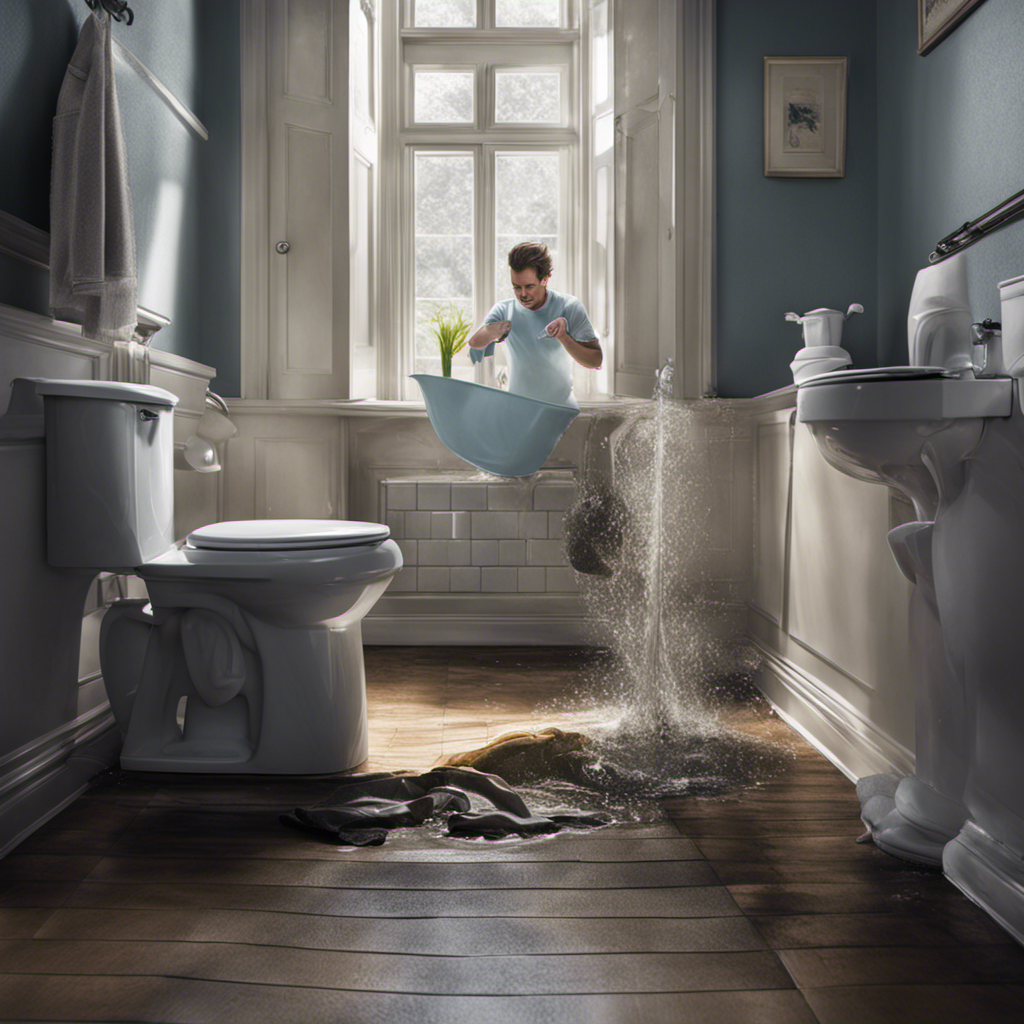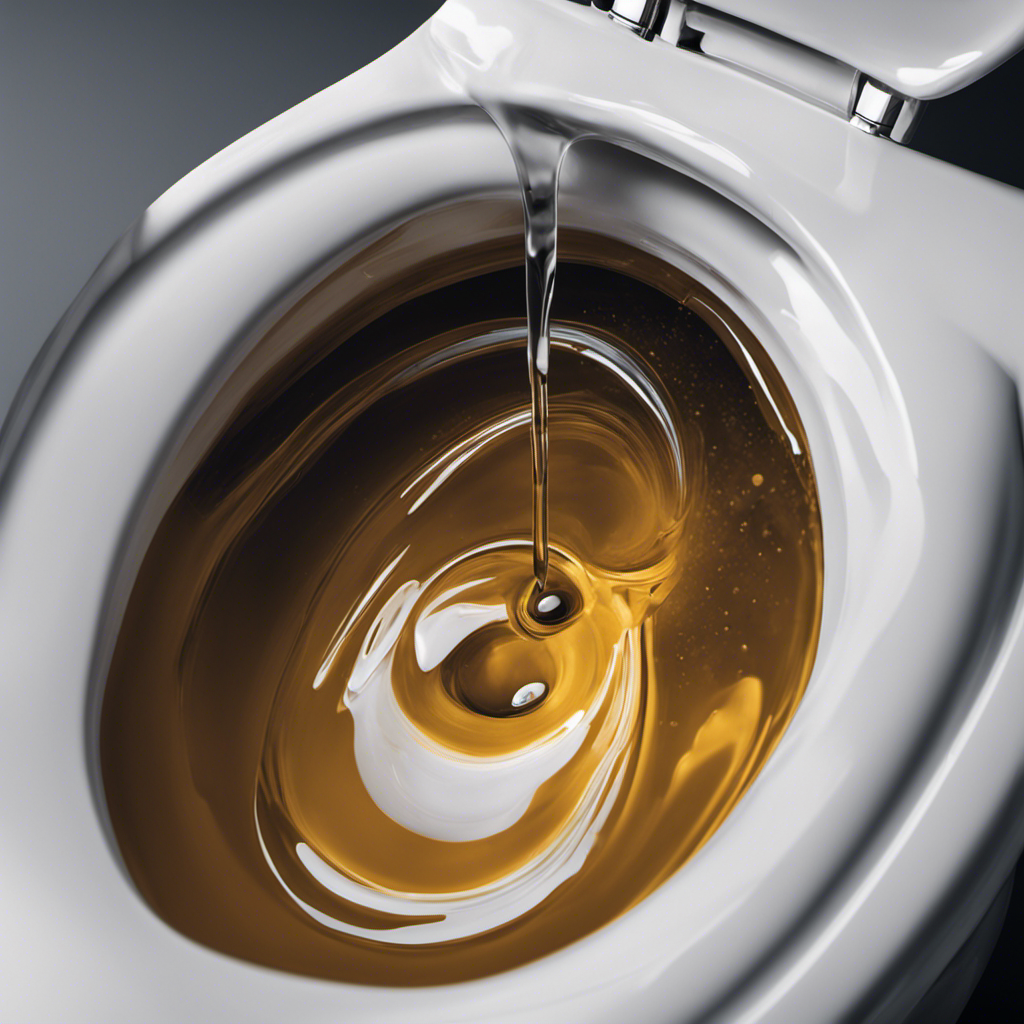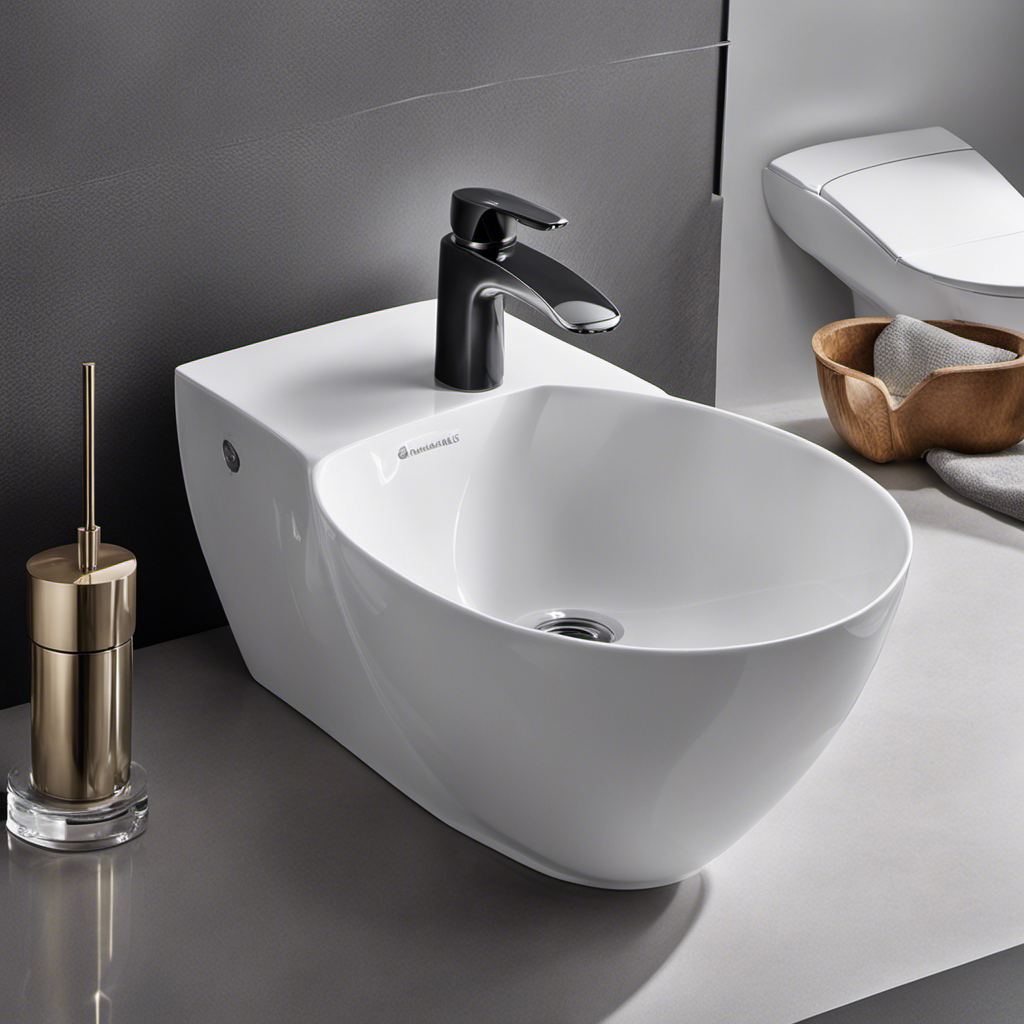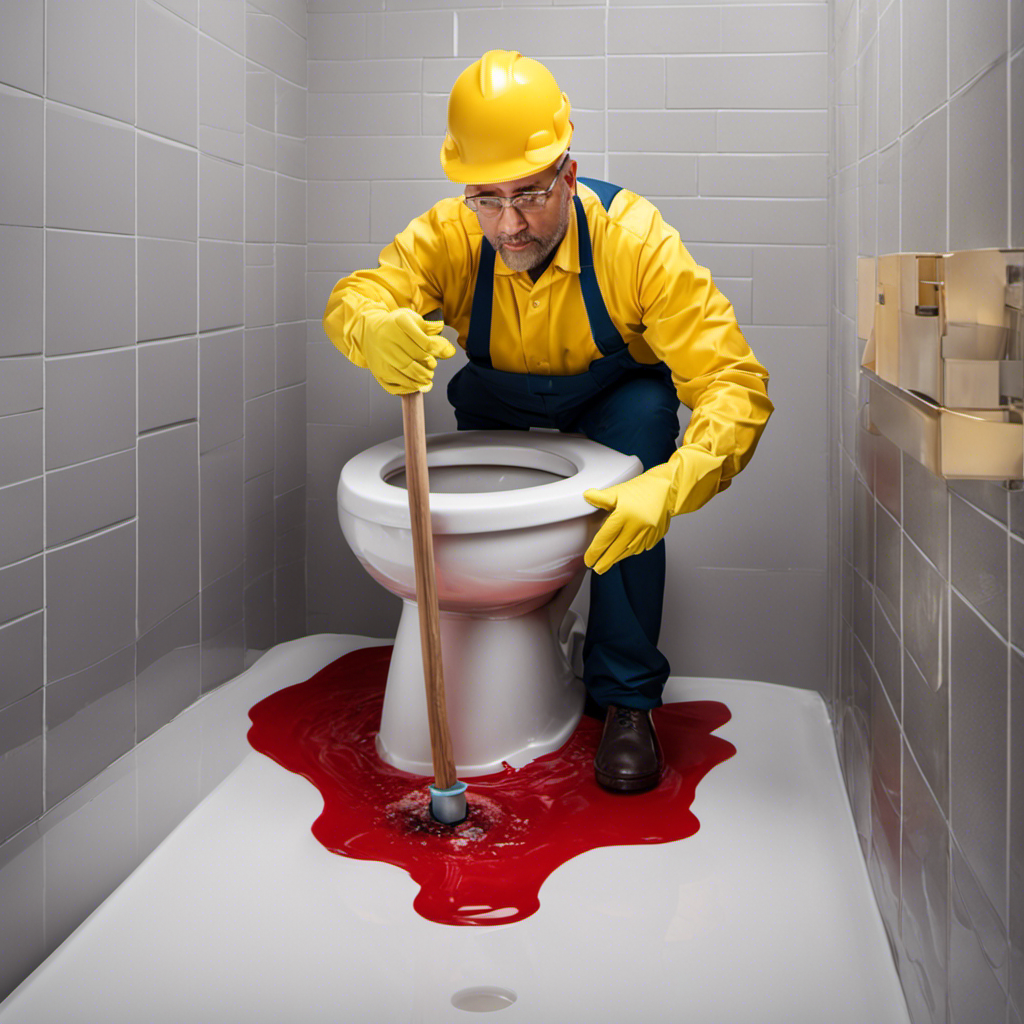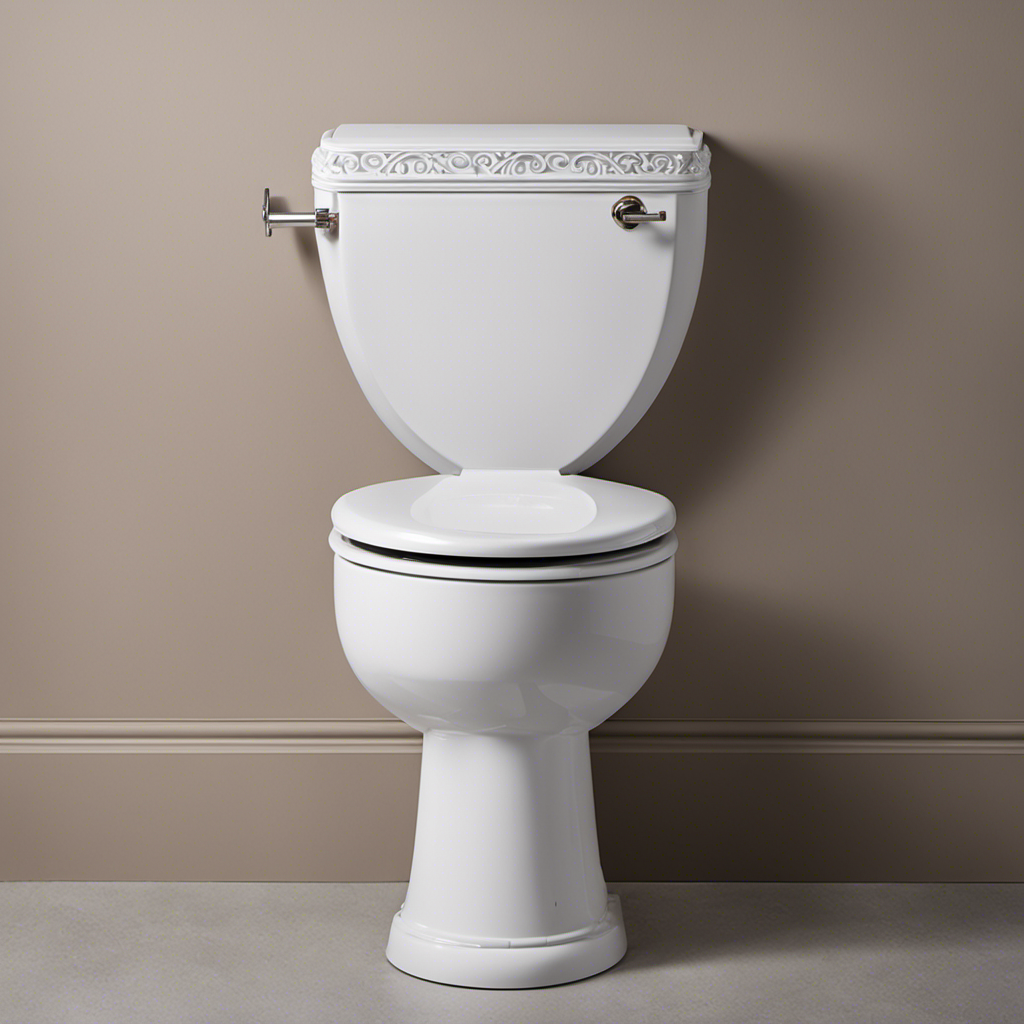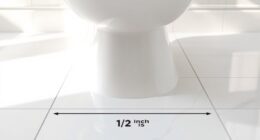Are you tired of wrestling with your stubborn toilet? Well, buckle up and get ready for the ultimate guide on why your toilet is refusing to unclog.
We’ve got all the answers you need to conquer this messy problem. From possible blockage causes to common mistakes you might be making, we’ll walk you through the DIY methods and signs that indicate it’s time to call in the professionals.
Get ready to become a toilet unclogging expert and bid farewell to those frustrating clogs!
Key Takeaways
- Flushing non-flushable items and excessive toilet paper can cause toilet blockages.
- Using excessive force with the plunger and chemical drain cleaners are common mistakes when unclogging a toilet.
- DIY methods for unclogging a toilet include pouring hot water, using a plunger correctly, trying homemade drain cleaner, and using a plumbing snake or auger.
- Signs that professional help is needed include recurring clogs, constant water level fluctuation, foul odor, multiple drain issues, and unusual sounds or vibrations when flushing.
Possible Blockage Causes
You might be wondering what could be causing the blockage in your toilet. Toilet clogs can be frustrating, but understanding the possible causes can help you prevent them in the future.
One common cause of toilet blockages is flushing items that are not meant to be flushed, such as sanitary products, wipes, or excessive amounts of toilet paper. These items can accumulate in the pipes and create a blockage.
Another cause could be a buildup of mineral deposits, especially in areas with hard water. These deposits can restrict the flow of water and lead to clogs.
Additionally, tree roots growing into the sewer lines can cause blockages. If you notice slow drainage, gurgling sounds, or water backing up in other drains, these may be symptoms of a toilet blockage.
Understanding the causes and symptoms of blockages can help you take preventive measures and avoid common mistakes when trying to unclog a toilet.
Common Mistakes When Trying to Unclog a Toilet
One common mistake when trying to unclog a toilet is using excessive force with the plunger. While it may seem logical to apply more pressure to dislodge the blockage, this can actually worsen the problem. Using too much force can cause the water to splash out of the bowl, creating a mess and potentially damaging the surrounding area.
To avoid further complications, it is important to be aware of the dangers of using chemical drain cleaners. These harsh chemicals can corrode pipes and harm the environment, posing a threat to both your plumbing system and the planet.
Additionally, proper toilet maintenance plays a crucial role in preventing clogs. Regularly cleaning the bowl and avoiding flushing items that are not meant to be flushed can significantly reduce the chances of blockages occurring.
DIY Methods for Unclogging a Toilet
To effectively clear a toilet clog, start by pouring a bucket of hot water into the bowl. This can help loosen the obstruction and potentially clear the clog. If that doesn’t work, you may need to try using a toilet plunger. To use a plunger, make sure there is enough water in the bowl to cover the rubber part of the plunger. Place the plunger over the drain hole and push down firmly, then pull up quickly. Repeat this motion several times until the clog is cleared. Another option is to try a homemade drain cleaner. Mix equal parts baking soda and vinegar, then pour it into the toilet bowl. Let it sit for about 30 minutes and then flush the toilet. This can help break down the clog and clear the drain.
Here is a table summarizing the DIY methods for unclogging a toilet:
| Method | Steps | Materials Needed |
|---|---|---|
| Hot Water | Pour a bucket of hot water into the toilet bowl | Bucket |
| Toilet Plunger | Place the plunger over the drain hole and | Toilet plunger |
| push down firmly, then pull up quickly | ||
| Homemade Drain | Mix equal parts baking soda and vinegar, | Baking soda, vinegar |
| Cleaner | pour it into the toilet bowl, let it sit, | |
| then flush the toilet |
Signs That You Need Professional Help
If the clog persists despite attempting various DIY methods, it may be necessary to seek professional assistance. While DIY methods can often solve minor clogs, there are times when the problem is more complex and requires the expertise of a professional plumber.
Here are some signs that indicate you need to hire a professional:
- The clog keeps recurring despite your best efforts.
- The water level in the toilet bowl is constantly fluctuating.
- There is a foul odor coming from the toilet.
- Multiple drains in your home are experiencing issues.
Regular toilet maintenance is important to prevent clogs and ensure the proper functioning of your plumbing system. By hiring a professional plumber, you can benefit from their knowledge, experience, and specialized equipment. They can accurately diagnose the problem, provide effective solutions, and help you avoid costly repairs in the long run.
Don’t hesitate to call a professional if you’re experiencing persistent clogs or other toilet-related issues.
Preventive Measures to Avoid Toilet Clogs
Regular maintenance and being mindful of what you flush down the toilet can help prevent clogs.
To maintain your toilet properly, start by regularly cleaning it with a toilet brush and disinfectant. This will remove any buildup or residue that can contribute to clogs.
Additionally, check the water level in the tank to ensure it is at the proper level. If it is too low, adjust the fill valve accordingly.
When it comes to disposal methods, it is important to remember that only human waste and toilet paper should be flushed down the toilet. Items such as wipes, sanitary products, or paper towels should never be flushed, as they can easily cause clogs.
Conclusion
So there you have it, dear reader. The mysteries of your stubbornly clogged toilet have been unraveled. Armed with knowledge of possible blockage causes and common mistakes to avoid, you can now confidently tackle the task of unclogging your toilet with DIY methods.
However, if all else fails and the water still refuses to flow freely, don’t hesitate to seek professional help.
Remember, prevention is always better than cure, so take preventive measures to avoid future toilet clogs.
May your toilets forever remain clear and unobstructed, like a pristine river flowing through a lush, untouched forest.
Happy unclogging!
